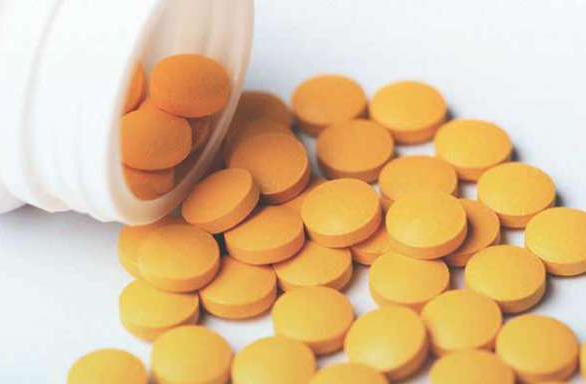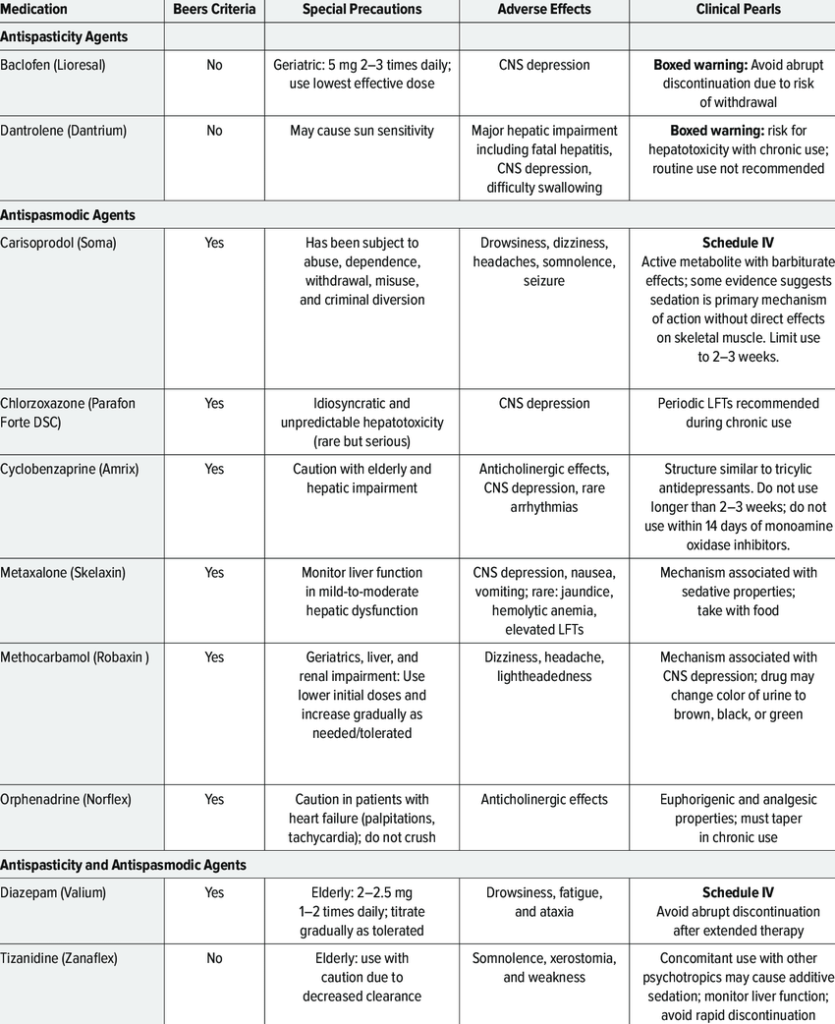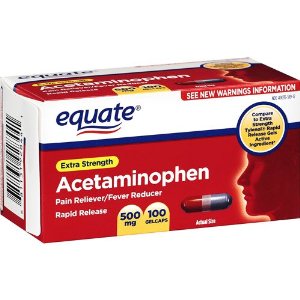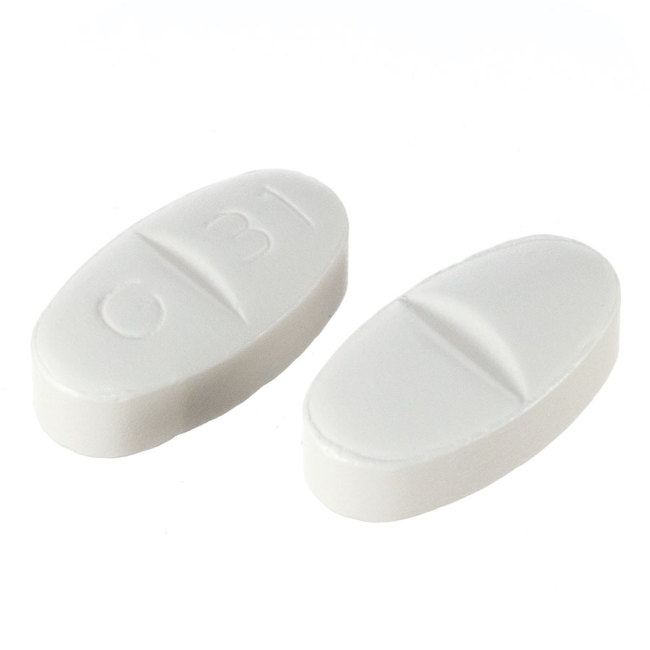Muscle relaxant is a term usually used to refer to skeletal muscle relaxants (drugs), which act on the central nervous system (CNS) to relax muscles.

- Cyclobenzaprine ( Generic Flexeril )
Muscle relaxants are medications that help reduce muscle spasms, which are involuntary muscle contractions caused by a spine-related problem, such as whiplash, fibromyalgia, or low back strain. Often, muscle spasms cause severe pain and may limit your mobility.
Your doctor may prescribe a muscle relaxant to ease muscle spasms, reduce pain, and help your muscles move better. When your muscles move better, it makes other spine pain treatments, such as physical therapy, stretching, and exercise, more effective.
These drugs are often prescribed to reduce pain and soreness associated with sprains, strains, or other types of muscle injury.
Some examples of commonly prescribed skeletal muscle relaxant medications include carisoprodol (Soma), cyclobenzaprine (Flexeril), and metaxalone (Skelaxin), which are taken in tablet form. Muscle relaxant drugs are only available by prescription in the U.S.
Other types of muscle relaxant drugs (neuromuscular blocking drugs) are sometimes used during the induction of general anesthesia or during insertion of an endotracheal (ET) tube.
These muscle relaxants are given intravenously (through the bloodstream) and act directly on the muscles. Examples of muscle relaxants used during surgical procedures include succinylcholine (Anectine, Sucostrin), atracurium (Tracrium), and pancuronium (Pavulon).
Muscle Relaxants for Muscle Spasms
Muscle spasms are painful and may restrict mobility, which can limit your ability to perform even basic activities. Painful, tight muscles can also interfere with getting a good night’s sleep.
Muscle relaxants may help reduce pain, and improve movement and range of motion, but your doctor will likely recommend that you first try acetaminophen or a nonsteroidal anti-inflammatory drug (NSAID). In some cases, these over-the-counter medications will be enough to help alleviate your pain.
If your muscle pain persists, your doctor may prescribe a muscle relaxant in addition to your pain medication. Below are common muscle relaxants (the generic names are listed first, with a brand name example in parentheses):
-
- Baclofen (Lioresal)
- Carisoprodol (Soma)
- Cyclobenzaprine (Amrix)
- Metaxalone (Skelaxin)
- Methocarbamol (Robaxin)
How Muscle Relaxant Works ?
Muscle relaxation and paralysis can theoretically occur by interrupting function at several sites, including the central nervous system, myelinated somatic nerves, unmyelinated motor nerve terminals, nicotinic acetylcholine receptors, the motor end plate, and the muscle membrane or contractile apparatus.
Most neuromuscular blockers function by blocking transmission at the end plate of the neuromuscular junction. Normally, a nerve impulse arrives at the motor nerve terminal, initiating an influx of calcium ions, which causes the exocytosis of synaptic vesicles containing acetylcholine. Acetylcholine then diffuses across the synaptic cleft. It may be hydrolysed by acetylcholine esterase (AchE) or bind to the nicotinic receptors located on the motor end plate.
The binding of two acetylcholine molecules results in a conformational change in the receptor that opens the sodium-potassium channel of the nicotinic receptor. This allows Na+and Ca2+ ions to enter the cell and K+
ions to leave the cell, causing a depolarization of the end plate, resulting in muscle contraction. Following depolarization, the acetylcholine molecules are then removed from the end plate region and enzymatically hydrolysed by acetylcholinesterase.
Normal end plate function can be blocked by two mechanisms. Nondepolarizing agents, such as tubocurarine, block the agonist, acetylcholine, from binding to nicotinic receptors and activating them, thereby preventing depolarization. Alternatively, depolarizing agents, such as succinylcholine, are nicotinic receptor agonists which mimic Ach, block muscle contraction by depolarizing to such an extent that it desensitizes the receptor and it can no longer initiate an action potential and cause muscle contraction.
Both of these classes of neuromuscular blocking drugs are structurally similar to acetylcholine, the endogenous ligand, in many cases containing two acetylcholine molecules linked end-to-end by a rigid carbon ring system, as in pancuronium (a nondepolarizing agent).
Warnings for Prescription Muscle Relaxants

Muscle relaxants such as carisoprodol and diazepam can be habit forming. Be sure to take your medication exactly as prescribed by your doctor.
Muscle relaxants can also cause withdrawal symptoms, such as seizures or hallucinations (sensing things that aren’t real). Do not suddenly stop taking your medication, especially if you’ve been taking it for a long time.
Also, muscle relaxants depress your central nervous system (CNS), making it hard to pay attention or stay awake. While taking a muscle relaxant, avoid activities that require mental alertness or coordination, such as driving or using heavy machinery.
You should not take muscle relaxants with:
-
-
- alcohol
- CNS depressant drugs, such as opioids or psychotropics
- sleeping medications
- herbal supplements such as St. John’s wort
-
Talk to your doctor about how you can safely use muscle relaxants if you:
- are older than 65 years
- have a mental health problem or brain disorder
- have liver problems
List of Common Muscle Relaxers

Muscle relaxers are usually prescribed to treat back pain in conjunction with rest and physical therapy. Common muscle relaxants include:
- Baclofen. Muscle tightness and muscle spasms, including those related to spine injuries, may be eased with baclofen. The medication may be helpful in treating multiple sclerosis and stabbing nerve pain. It is available as a tablet and can be taken by children as young as 12 years old. Some common side effects could include nausea and vomiting, confusion, drowsiness, headache, or muscle weakness. Baclofen is rated C in the FDA’s A through X pregnancy safety ranking for medications, with A being the safest. The C category means that the medication should only be used if the benefits outweigh the risks.
- Benzodiazepines. In addition to treating anxiety, alcohol withdrawal, and seizure disorders, such as epilepsy, benzodiazepines can also treat muscle spasms and skeletal pain. Benzodiazepines, such as diazepam (Valium), lorazepam (Ativan), and temazepam (Restoril), are typically only intended for short-term use. This limitation is due to their habit-forming potential and because they alter sleep cycles, leading to sleep difficulties once the drug is stopped. Benzodiazepines are sold as tablets, liquid, injections, and rectal gels. People who have myasthenia gravis, severe liver disease, serious breathing troubles, or some forms of glaucoma, should avoid taking diazepam. All benzodiazepines are rated D by the FDA for safety during pregnancy and are not recommended for women who are pregnant.
- Carisoprodol (Soma). Carisoprodol relaxes muscles and eases pain and stiffness caused by acute bone and muscle problems, often caused by an injury. It is taken by mouth in tablet form and is also available in combination with aspirin or aspirin and codeine. Carisoprodol can be habit-forming, particularly if used in conjunction with alcohol or other drugs that have a sedative effect, including opioids (such as codeine). Common side effects include drowsiness, dizziness, and headache. People with a history of blood disorders, kidney or liver disease, and seizures may need to avoid Carisoprodol. It is rated C in the FDA’s pregnancy safety ranking for medications.
- Chlorzoxazone (Lorzone). Chlorzoxazone is used for the relief of discomfort from acute, painful, musculoskeletal conditions. Chlorzoxazone is available as a tablet. Common side effects include drowsiness, dizziness, and nausea. Chlorzoxazone is not recommended for people with liver disease. It has not been rated by the FDA for safety during pregnancy.
- Cyclobenzaprine (Amrix, Fexmid, FlexePax Kit, FusePaq Tabradol). Cyclobenzaprine eases stiffness and pain from muscle cramps, also called muscle spasms. It is available as a tablet and extended-release capsule. Cyclobenzaprine itself is not intended for long-term use (more than 2 to 3 weeks). Common side effects include blurred vision, dizziness or drowsiness, and dry mouth. It is not advised for those with an overactive thyroid, heart problems, or liver disease. Cyclobenzaprine is rated B by the FDA for safety during pregnancy, making it the safest muscle relaxant to use while pregnant.
- Dantrolene (Dantrium). Dantrolene helps control chronic spasticity related to spinal injuries. It is also used for conditions such as stroke, multiple sclerosis, and cerebral palsy. Dantrolene is taken as a capsule or intravenous powder for injection. Drowsiness and sensitivity to light are common side effects. It can cause severe liver problems, and should not be taken by people with active liver disease. The FDA has given dantrolene a C rating for safety in pregnancy.
- Metaxalone (Skelaxin, Metaxall, and Metaxall CP, Lorvatus PharmaPak). Metaxalone targets pain and muscle spasms from sprains, strains, and muscle injuries. It is available as a tablet or injection. Common side effects include drowsiness, dizziness, nausea, and vomiting. Metaxalone is generally not recommended for people with a known tendency to become anemic, and who have kidney or liver disease. Metaxalone may affect blood sugar tests for people with diabetes. The FDA has not rated metaxalone for safety during pregnancy.See Pulled Back Muscle and Lower Back Strain and Neck Strains and Sprains Video
- Methocarbamol (Robaxin, Robaxin-750). Methocarbamol eases acute muscle and bone pain. It can be taken as a tablet or by injection. Common side effects include dizziness, headache, nausea, flushing, and blurred vision. Methocarbamol is generally not recommended to people with renal disease or failure, or a history of allergic reaction to the medication. The FDA has given methocarbamol a C rating for safety during pregnancy.
- Orphenadrine. Orphenadrine is a medication used to relieve pain and stiffness caused by muscle injuries. It is available as an extended-release tablet. Common side effects include dry mouth, lightheadedness, difficult urination, heartburn, nausea and vomiting. It is generally not recommended to people with previous sensitivities to the ingredients, myasthenia gravis, those with glaucoma or certain types of ulcers. The FDA has given orphenadrine a C rating for safety during pregnancy.
- Tizanidine (Comfort Pac with Tizanidine, Zanaflex). Tizanidine is used to treat muscle spasms caused by spinal cord injuries and other conditions such as multiple sclerosis. Tizanidine is available in tablet and capsule form and absorbs differently depending on whether it is taken on an empty stomach or with food. Common side effects include dry mouth, dizziness, constipation and tiredness. It should not be used by people taking fluvoxamine or ciprofloxacin or those who have liver disease. Tizanidine is rated in the C category for safety during pregnancy.
- Buspirone (BuSpar, BuSpar Dividose, Vanspar) -Buspirone is an anti-anxiety medicine that affects chemicals in the brain that may be unbalanced in people with anxiety. Buspirone is used to treat symptoms of anxiety, such as fear, tension, irritability, dizziness, pounding heartbeat, and other physical symptoms. Buspirone is not an anti-psychotic medication and should not be used in place of medication prescribed by your doctor for psychotic disorders.
What is the best over-the-counter (OTC) medicine for muscle pain?

These are the medications that you can find while perusing the aisles at your local pharmacy or convenience store. Most of them are household names, and it’s not uncommon to keep them on hand, stashed in a medicine cabinet, just in case. Even though OTC medications are easy to obtain, they’ll do the job for many aches and pains, and doctors often recommend them prior to prescribing stronger treatment options.
“OTC NSAIDS, like ibuprofen and naproxen, are a good first line agent to decrease inflammation surrounding an injury,” recommends Joanna Lewis, Pharm.D., creator of The Pharmacist’s Guide. They might not have the same potency of high-grade muscle relaxants, but they’re still effective and have very few side effects. If you roll your ankle at the gym or wake up with back pain, try one of these before asking your doctor for a prescription.
- Advil (ibuprofen): This is a staple of parents, doctors, and athletes alike. Ibuprofen is one of the most widely used nonsteroidal anti-inflammatory drugs (NSAIDs) available. As such, Advil doesn’t just remedy pain, but also inflammation as well. It’s highly versatile. Use it to treat low back pain, osteoarthritis, menstrual cramps, fever, headaches, migraines, sprains, and other minor injuries. Low doses are available over the counter, but a doctor can prescribe higher doses as well.
- Motrin IB (ibuprofen): Don’t be fooled by the different brand name. Motrin IB and Advil are the same drug. Therefore, they shouldn’t be taken together, as it could increase the risk of overdose.
- Aleve (naproxen): Another medicine cabinet staple, naproxen is similar to ibuprofen in many ways. It’s also an NSAID, so it works by reducing inflammation. It’s useful in treating muscle pain, headaches, migraines, osteoarthritis, fever, cramps, and minor injuries. The main difference between naproxen and ibuprofen is their dosing. You can take naproxen every eight to 12 hours and ibuprofen every four to six, so Aleve is slightly longer-lasting.
- Aspirin: One more NSAID for you. Aspirin treats many of the same conditions, relieving pain and reducing inflammation. However, daily doses of aspirin have been proven effective at reducing the risk of blood clots, strokes, and heart attacks in some people. Ask your doctor before using for clot prevention. If you’re a candidate, you will likely take a “baby” aspirin, or 81 mg, coated tablet daily. Common brand names include Bayer or Ecotrin.
- Tylenol (acetaminophen): Unlike NSAIDs, acetaminophen focuses solely on treating pain—not inflammation. It’s used for muscle aches, headaches, migraines, back and neck pain, fevers, etc. However, if swelling and inflammation is the underlying cause of your pain, acetaminophen will not be nearly as effective as NSAIDs like those listed above. Acetaminophen’s wide range of uses and relatively few side effects make it the most popular OTC pain reliever worldwide.
Off-label medications for spasticity
Doctors can use certain medications to treat spasticity even when the drugs are not approved for that purpose by the U.S. Food and Drug Association (FDA). This is called off-label drug use. The following drugs are not actually muscle relaxants, but they can still help relieve symptoms of spasticity.
Benzodiazepines
Benzodiazepines are sedatives that can help relax muscles. They work by increasing the effects of certain neurotransmitters, which are chemicals that relay messages between your brain cells.
Examples of benzodiazepines include:
-
-
- clonazepam (Klonopin)
- lorazepam (Ativan)
- alprazolam (Xanax)
-
Side effects of benzodiazepines can include drowsiness and problems with balance and memory. These drugs can also be habit forming.
Clonidine
Clonidine (Kapvay) is thought to work by preventing your nerves from sending pain signals to your brain or by causing a sedative effect.
Clonidine should not be used with other muscle relaxants. Taking it with similar drugs increases your risk of side effects. For instance, taking clonidine with tizanidine can cause very low blood pressure.
Clonidine is available in brand-name and generic versions.
Gabapentin

Gabapentin (Neurontin) is an anticonvulsant drug typically used to relieve seizures. It’s not fully known how gabapentin works to relieve muscle spasticity. Gabapentin is available in brand-name and generic versions.
what is muscle relaxant Side Effects?
Some of the common side effects of muscle relaxers include:
- Drowsiness
- Dizziness
- Agitation
- Irritability
- Headache
- Nervousness
- Dry mouth
- Decreased blood pressure
- Sleepiness or grogginess
- Fatigue
- Dry mouth
- Constipation
- Nausea
More serious side effects include:
- Light-headedness or fainting
- Blurred vision
- Confusion
- Urinary retention
Any serious side effects should be reported to a doctor immediately.
Risks Associated with Muscle Relaxers
Muscle relaxers are a group of drugs that have a sedative effect on the body. They work through the brain, rather than directly on the muscles. Muscle relaxants are generally used for a few days and up to 3 weeks, but are sometimes prescribed for chronic back pain or neck pain.
To minimize risk, the doctor should be informed of any history of seizures, liver disease, and any other medical conditions or concerns. Women should inform their doctors if they are pregnant, plan to become pregnant, or are breast-feeding.
- Sleepiness. Because muscle relaxers are total body relaxants, they typically induce grogginess or sleepiness. As a result, it is not safe to drive or make important decisions while taking muscle relaxers. Muscle relaxers are often suggested for evening use due to their sedative effect.
- Interactions with alcohol. Drinking alcohol can be especially dangerous when taking muscle relaxers. The sedative effect of the medication is intensified with alcohol use, and combining the two can be fatal.
- Allergic reactions. No medication should be taken if the person has had an allergic reaction to it in the past, even if the reaction seemed mild. Symptoms of an allergic reaction include swelling in the throat or extremities, trouble breathing, hives, and chest tightness.
- Potential for abuse. Muscle relaxers have a risk of misuse and abuse. Some muscle relaxers, such as cyclobenzaprine, can be habit-forming on their own. Others may be taken in conjunction with other drugs, such as opioids, to create a high, and are therefore more likely to be abused.
- Tapering off. Stopping a muscle relaxer abruptly can be harmful. Instead, the doctor will prescribe a gradual reduction in dosage.
Muscle Relaxer Abuse
Muscle relaxers have a potential for abuse and addiction. Prolonged use can lead to increased tolerance and physical dependence, especially with Soma. For this reason, muscle relaxers are intended as a short-term treatment not to be prescribed for more than 2-3 weeks.
Unfortunately, many individuals take muscle relaxers alone or in combination with other illicit drugs for nonmedical reasons, such as to produce or enhance feelings of euphoria and dissociation. According to the Drug Enforcement Administration, Soma is one of the most commonly diverted drugs in the United States.
Evidence also indicates prevalent misuse of Flexeril. In 2010 there were over 12,000 emergency room visits associated with Flexeril, and in 2016 over 10,000 calls to the Poison Control Centers had involved Flexeril.1
Muscle relaxer abuse can lead to serious dangers such as an increased risk of overdose, which can result in:
-
-
- stupor
- hallucinations
- seizures
- shock
- respiratory depression
- cardiac arrest
- coma
- death
-
Alcohol and Muscle Relaxers

Like muscle relaxers, alcohol also depresses the central nervous system. When alcohol is consumed with muscle relaxers the side effects are exacerbated. This can be very dangerous, leading to symptoms like:
-
-
- Blurred vision
- Urine retention
- Extreme dizziness
- Extreme drowsiness
- Low blood pressure
- Fainting
- Memory problems
- Liver damage
- Increased risk of overdose
-
It is recommended to not drive or operate heavy machinery when under the influence of muscle relaxers. It is especially important to avoid drinking, as combining muscle relaxers with alcohol greatly increases your risk of an accident.
Withdrawal and Treatment
Regular use of muscle relaxers causes the brain to become used to its effects. If you attempt to suddenly stop using muscle relaxers you may experience withdrawal symptoms. Depending on the specific drug and how long you have been using it, there are various treatment options available to help you overcome your addiction.
For many people, Flexeril withdrawal causes mild symptoms such as nausea, headache, drowsiness, malaise, and discomfort. Symptoms tend to peak about 2-4 days after you last took the Flexeril, although in some people withdrawal symptoms may last for up to 1-2 weeks. For many people Flexeril detox can be done at home. However, if Flexeril addiction is accompanied by alcohol or opioid abuse the withdrawal symptoms from these other substances can be severe. In these situations, it may be best to undergo professional medical detox.
Soma withdrawal is usually more severe and can include symptoms like hallucinations and seizures. For your safety and comfort, it is often best to find an inpatient treatment program that includes a detox program to manage withdrawal symptoms. After detox patients can transition into the actual treatment phase of the program. Some people may not require a supervised detox program and will be able to undergo treatment on an outpatient basis.
Most inpatient and outpatient rehab programs include cognitive behavioral therapy that will help you learn the coping skills needed for long-term recovery.
